Thomas Wartenberg
The philosophy of film is a rapidly growing subfield of contemporary philosophy of art. Although philosophers were among the first academics to publish studies of the new artform in the early decades of the twentieth century, the field did not experience significant growth until the 1980's when a renaissance occurred. There are many reasons for the field's recent growth. Suffice it to say here that changes in both academic philosophy and the cultural role of the movies in general made it imperative for philosophers to take film seriously as an artform on a par with the more traditional ones like theater, dance, and painting. As a result of this surge in interest in film as a subject for philosophical reflection, the philosophy of film is now an important area of research in aesthetics.
[…]
2. The Nature of Film
The question that dominated early philosophical inquiry into film was whether the cinema—a term that emphasizes the institutional structure within which films were produced, distributed, and viewed—could be regarded as an artform. There were two reasons why cinema did not seem worthy of the honorific designation of an art. The first was that early contexts for the exhibition of films included such venues as the vaudeville peep show and the circus side show. As a popular cultural form, film seemed to have a vulgarity that made it an unsuitable companion to theater, painting, opera, and the other fine arts. A second problem was that film seemed to borrow too much from other art forms. To many, early films seemed little more than recordings of either theatrical performances or everyday life. The rationale for the former was that they could be disseminated to a wider audience than that which could see a live performance. But film then only seems to be a means of access to art and not an independent art form on its own. The latter, on the other hand, seemed too direct a reproduction of life to qualify as art, for there seemed little mediation by any guiding consciousness.
[…]
Hugo Münsterberg, the first philosopher to write a monograph about the new art form, sought to distinguish film by means of the technical devices that it employed in presenting its narratives (Münsterberg 1916). Flashbacks, close-ups, and edits are some examples of the technical means that filmmakers employ to present their narratives that theater lacks. For Münsterberg, the use of these devices distinguished film from the theater as an artform.
Münsterberg went on to ask how viewers are able to understand the role that these technical devices play in the articulation of cinematic narratives. His answer is that these devices are all objectifications of mental processes. A close-up, for example, presents in visual form a correlate to the mental act of paying attention to something. Viewers naturally understand how such cinematic devices function because they are familiar with the workings of their own minds and can recognize these objectified mental functions when they see them. Although this aspect of Münsterberg's theory links him to contemporary cognitive philosophers of film, he does not explain how viewers know that what they are looking at are objectified mental functions.
For [Rudolph] Arnheim, the silent film had achieved artistic status by focusing on its ability to present moving bodies. Indeed, for him, the artistic aspect of cinema consisted in its ability to present abstractions, an ability completely lost when films began to employ simultaneous soundtracks. Writing near the dawn of the talkie, Arnheim could only see what we now recognize as a natural development of the artform as a decline from a previously attained height.
André Bazin, though not a professional philosopher or even an academic, countered Arnheim's assessment in a series of articles that still exert an important influence on the field. (Bazin 1967; 1971) For Bazin, the important dichotomy is not that between the sound and the silent film but rather between films that focus on the image and those that emphasize editing. Although editing had emerged for many such as Sergei Eisenstein as the distinctive aspect of film, Bazin returns to the silent era to demonstrate the presence of an alternative means of achieving film art, namely an interest in allowing the camera to reveal the actual nature of the world. Relying on a conception of film as having a realist character because of its basis in photography, Bazin argues that the future of cinema as an artform depends on its development of this capacity to present the world to us “frozen in time.”
In making his argument, Bazin valorizes the film style he dubs realism, characterized by extended shots and deep focus. Jean Renoir, Orson Welles, and the Italian neo-Realists are the filmmakers whom Bazin sees as culminating this imagist tradition of filmmaking that has realized the true potential of the medium.
[…]
The discussion of the realist character of film continues to be a topic of heated debate among philosophers of film. Most recently, the emergence of digital technologies for fashioning the image raise very basic questions about the plausibility of this view.
[…]
4. Emotional Engagement
Philosophic discussion of viewer involvement with films starts out with a puzzle that has been raised about many artforms: Why should we care what happens to fictional characters? After all, since they are fictional, their fates shouldn't matter to us in the way that the fates of real people do. But, of course, we do get involved in the destinies of these imaginary being. The question is why. Because so many films that attract our interest are fictional, this question is an important one for philosophers of film to answer.
One answer, common in the film theory tradition, is that the reason that we care about what happens to some fictional characters is because we identify with them. Although or, perhaps, because these characters are highly idealized—they are more beautiful, brave, resourceful, etc. than any actual human being could be—viewers identify with them, thereby also taking themselves to be correlates of these ideal beings. But once we see the characters as versions of ourselves, their fates matter to us, for we see ourselves as wrapped up in their stories. In the hands of feminist theorists, this idea was used to explain how films use their viewers' pleasures to support a sexist society. Male viewers of film, it was held, identify with their idealized screen counterparts and enjoy the objectification of women through both screen images that they view with pleasure and also narratives in which the male characters with whom they identify come to possess the sought after female character.
Philosophers of film have argued that identification is too crude a tool to use to explain our emotional engagement with characters, for there is a wide variety of attitudes that we take to the fictional characters we see projected on the screen. (See, for example, Smith (1995).) And even if we did identify with some characters, this would not explain why we had any emotional reactions to characters with whom we did not identify. Clearly, a more general account of viewer involvement with cinematic characters and the films in which they appear is required.
The general outline of the answer philosophers of film have provided to the question of our emotional involvement with films is that we care about what happens in films because films get us to imagine things taking place, things that we do care about. Because how we imagine things working out does affect our emotions, fiction films have an emotional impact upon us.
There are two basic accounts that philosophers have put forward to explain the effects that the imagination has upon us. Simulation theory employs a computer analogy, saying that imagining something involves one having one's usual emotional response to situations and people, only the emotions are running off-line. What this means is that, when I have an emotional response like anger to an imagined situation, I feel the same emotion that I would normally feel only I am not inclined to act on this emotion, say, by yelling or responding in an angry way, as I would be if the emotion was a full-fledged emotion.
What this explains, then, is a seemingly paradoxical feature of our film-going experience: that we seem to enjoy watching things on the screen that we would hate seeing in real life. The most obvious context for this is horror films, for we may enjoy seeing horrific events and beings that we would strongly desire not to witness in real life. The last thing I would want to see more of in real life is a rampaging giant ape, yet I am fascinated to watch its screen expoits. The simulation theorist says that the reason for this is that, when we experience an emotion off-line that would be distressing in real life, we may actually enjoy having that emotion in the safety of the off-line situation.
One problem facing the simulation theorist is explaining what it means for an emotion to be off-line. While this is an intriguing metaphor, it is not clear that the simulation theorist can provide an adequate account of how we are to cash it out.
An alternative account of our emotional response to imagined scenarios has been dubbed the thought theory. The idea here is that we can have emotional responses to mere thoughts. When I am told that a junior colleague of mine was unjustly denied reappointment, the thought of this injustice is sufficient to make me experience anger. Similarly, when I imagine such a scenario in relation to someone, the mere thought of them being treated in this way can occasion my anger. Mere thought can bring about real emotion.
What the thought theory claims about our emotional response to films is that our emotions are brought about by the thoughts that occur to us as we are watching a film. When we see the dastardly villain tying the innocent heroine to the tracks, we are both concerned and outraged by the very thought that he is acting in this way and that she is therefore in danger. Yet all the time we are aware that this is a merely fictional situation, so there is no temptation to yield to a desire to save her. We are always aware that no one is really in danger. As a result, there is no need, says the thought theorist, for the complexities of simulation theory in order to explain why we are moved by the movies.
There are some problems with thought theory as well. Why should a mere thought, as opposed to a belief, be something that occasions an emotional response from us? If I believe that you were wronged, that's one thing. But the thought of your being wronged is another. Since we can't have full-fledged beliefs about the fictional characters in films, the thought theory needs to explain why we are so moved by their fates. (See Plantinga and Smith (1999) for more discussion of this issue.)
5. Film Narration
Fiction films tell stories. Unlike literary media such as novels, they do so with images and sound—including both words and music. Clearly, some films have narrators. These narrators are generally character narrators, narrators who are characters within the fictional world of the film. They tell us the film's stories and, supposedly, show us the images that we see. Sometimes, however, a voice-over narration presents us with an apparently objective view of the situation of the characters, as if it originated from outside of the film world. In addition, there are fiction films, films that tell stories, in which there is no clear agent who is doing the telling. These facts have given rise to a number of puzzles about film narration that have been discussed by philosophers of film. (See Chatman (1990) and Gaut (2004).)
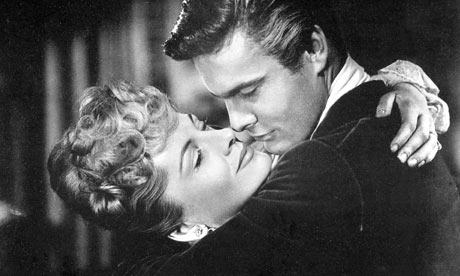
One central issue that has been a subject of controversy among philosophers is unreliable narration. There are films in which the audience comes to see that the character narrator of the film has a limited or misguided view of the film world. One example is Max Ophuls' Letter from an Unknown Woman (1948), a film that has been discussed by a number of different philosophers. The majority of the film is a voice-over narration by Lisa Berndle, the unknown woman of the film's title, who recites the words of the letter she sends to her lover, Max Brand, shortly before her death. The audience comes to see that Lisa has a distorted view of the events she narrates, most clearly in her misestimation of the character of Brand. This raises the question of how the audience can come to know that Lisa's view is distorted, since what we hear and see is narrated (or shown) by her. George Wilson (1986) has argued that unreliable narratives such as this require the positing of an implicit narrator of the film, while Gregory Currie (1995) has argued that an implied filmmaker suffices. This question has become very relevant with the increased popularity of filmmaking styles involving unreliable narration. Bryan Singer's The Usual Suspects (1995) touched off a flurry of films whose narrators were unreliable in one way or another.

A related issue concerning narrative that has been a focus of debate is whether all films have narrators, including those without explicit ones. Initially, it was argued that the idea of a narratorless narrative did not make sense, that narration required an agent doing the narrating, who was the film's narrator. In cases where there were no explicit narrators, an implicit narrator needed to be posited to make sense of how viewers gained access to the fictional world of the film. Opponents responded that the narrator in the sense of the agent who gave film audiences access to a film's fictional world could be the filmmaker(s), so there was no need to posit such a dubious entity as an implicit narrator of a film.
There is, however, an even deeper problem in regard to film narration over what has been called the “Imagined Seeing Thesis” (Wilson 1997). According to this Thesis, viewers of mainstream fiction films imagine themselves to be looking into the world of the story and seeing segments of the narrative action from a series of definite visual perspectives. In its traditional version, viewers are taken to imagine the movie screen as a kind of window that allows them to watch the unfolding of the story on the “other side.” However, it is hard for this view to account for what is being imagined when, for example, the camera moves, or there is an edit to a shot that incorporates a different perspective on a scene, etc. As a result, an alternative view has been suggested, namely that viewers imagine themselves to be seeing motion picture images that have been photographically derived, in some indeterminate way, from within the fictional world itself. But this position runs into problems, since it is normally part of the film's fiction that no camera was present in the fictional space of the narrative. The resulting debate is over whether to reject as incoherent the Imagined Seeing Thesis or whether it is possible to develop an acceptable version of this Thesis. Philosophers remain sharply divided on this fundamental issue.
The topic of film narration thus continues to be a subject of intense philosophical discussion and investigation. Various attempts to explain its nature remain hotly debated. As new and more complex styles of film narration become popular, it is likely that the subject of film narration will continue to receive attention from philosophers and aestheticians.
6. Film and Society
The best way to understand the innovations made by philosophers in our understanding of how films relate to society is to look at the view that was dominant in film theory some years ago. According to that view, popular narrative films—especially those produced by “Hollywood,” a term that referred to the entertainment industry located in Hollywood, California, but also included popular narrative films produced on a similar model—inevitably supported social oppression by denying, in one way or another, its existence. Such films were taken to present nothing but fairytales that used the realistic character of the medium to present those imaginary stories as if they were accurate pictures of reality. In this way, the actual character of the social domination assumed by such a view to be rampant in contemporary society was obscured in favor of a rosy picture of the realities of human social existence.
As part of their argument, these film theorists have gone beyond examining individual films themselves and have argued that the very structure of the narrative film functions to assist in the maintenance of social domination. From this point of view, an overcoming of narrativity itself is required for films to be genuinely progressive.
In opposition to such a negative view of film's relationship to society, philosophers of film have argued that popular films need not support social domination but can even give expression to socially critical attitudes. In making this argument, they have corrected film theory's tendency to make broad generalizations about the relationship between film and society that are not grounded in careful analysis of individual films. They have instead concentrated upon presenting detailed interpretations of films that show how their narratives present critical takes on various social practices and institutions. Class, race, gender, and sexuality are among the different social arenas in which philosophers of film have seen films make socially conscious, critical interventions in public debates.
One interesting example of films that develop political stances that are not merely supportive of existing modes of social domination are those that involve interracial couples. So Stanley Kramer's 1967 film, Guess Who's Coming to Dinner, investigates the plausibility of racial integration as a solution to the problems of anti-black racism in America through its portrayal of the problems facing an interracial couple. Nearly 25 years later, Spike Lee's Jungle Fever argues against the earlier film's political agenda, once again using an interracial couple that encounters racism. Only this time, the film asserts that the intransigent racism of White Americans undermines integration as a panacea to the ills of this racist society (Wartenberg 1999). And many other films employ this narrative figure to investigate other aspects of racism and possibilities for its overcoming.

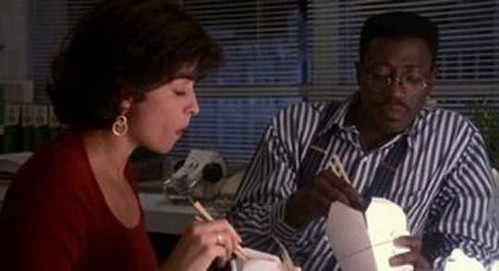
Similarly, philosophers have looked outside of Hollywood to the films of progressive filmmakers like John Sayles to illustrate their belief that narrative films can make sophisticated political statements. A film like Matewan is shown to involve a sophisticated investigation of the relationship between class and race as sites of social domination.
In general, then, we can say that philosophers have resisted a monolithic condemnation of films as socially regressive and explored the different means that filmmakers have used to present critical perspectives on areas of social concern. While they have not ignored the ways in which standard Hollywood narratives undermine critical social awareness, they have shown that narrative film is an important vehicle for communal reflection on important social issues of the day.
7. Film as Philosophy
Ever since Plato banished poets from his ideal city in The Republic, hostility towards the arts has been endemic to philosophy. To a large extent, this is because philosophy and the various artforms were perceived to be competing sources of knowledge and belief. Philosophers concerned to maintain the exclusivity of their claim to truth have dismissed the arts as poor pretenders to the title of purveyors of truth.
Philosophers of film have generally opposed this view, seeing film as a source of knowledge and, even, as potential contributor to philosophy itself. This view was forcefully articulated by Stanley Cavell, whose interest in the philosophy of film helped spark the field's development. For Cavell, philosophy is inherently concerned with skepticism and the different ways that it can be overcome. In his many books and articles, Cavell has argued that film shares this concern with philosophy and can even provide philosophic insights of its own (Cavell 1981; 1996; 2004).
Until recently, there have been few adherents to the idea that films can make a philosophical contribution. (But see Kupfer (1999) and Freeland (2000) for counterinstances.) In part, this is because Cavell's linking of film to skepticism seems inadequately grounded, while his account of skepticism as a live option for contemporary philosophy is based on a highly idiosyncratic reading of the history of modern philosophy. Nonetheless, Cavell's interpretations of individual films' encounter with skepticism are highly suggestive and have influenced many philosophers and film scholars with the seriousness with which they take film. (For one example, see Mulhall (2001).)
Now, however, there is an ongoing debate about the philosophical capacity of film. In opposition to views like that of Cavell, a number of philosophers have argued that films can have at most a heuristic or pedagogic function in relation to philosophy. Others have asserted that there are clear limits to what films can accomplish philosophically. Both of these types of views regard the narrative character of fiction films as disqualifying them from genuinely being or doing philosophy.
Opponents to this point of view have pointed to a number of different ways in which films can do philosophy. Foremost among these is the thought experiment. Thought experiments involve imaginary scenarios in which readers are asked to imagine what things would be like if such-and-such were the case. Those who think that films can actually do philosophy point out that fiction films can function as philosophical thought experiments and thus qualify as philosophical (See Wartenberg 2007). Many films have been suggested as candidates for doing philosophy, including the Wachowski Brothers' 1999 hit The Matrix, a film that has engendered more philosophical discussion than any other film, Memento (2000), and Eternal Sunshine of the Spotless Mind (2004).
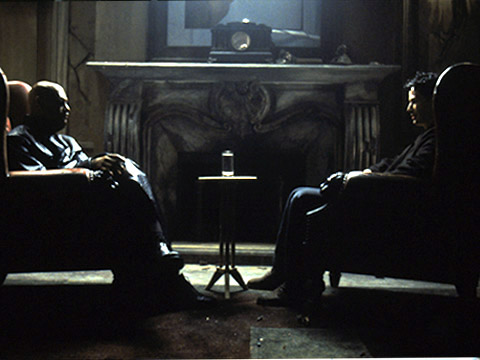

Philosophers have also begun to pay attention to a strand of avant-garde filmmaking known as structural films. These films are analogues to minimalism in the other arts and thus give rise to the question of whether they are not actual experiments that seek to show necessary criteria for something being a film. If this view is accepted, then these films—examples include The Flicker (1995) and Serene Velocity (1970)—could be seen as making a contribution to philosophy by identifying such putative necessary features of films. This view, while adopted by Nöel Carroll (See Carroll and Choi 2006); Thomas Wartenberg 2007), has also been criticized on similar grounds to those used to deny the philosophical potential of fiction films, namely that films cannot actually do the “hard work” of philosophy.
Whatever position one takes on the possibility of “cinematic philosophy,” it is clear that the philosophical relevance of film has been recognized by philosophers. Even those who deny that films can actually do philosophy have to acknowledge that films provide audiences with access to philosophical questions and issues. Indeed, the success of the book series entitled “Philosophy and X,” where one can substitute any film or television show for X, indicates that films are bringing philosophical issues to the attention of wide audiences. There can be no doubt that this is a healthy development for philosophy itself.
8. Conclusions and Prognosis
The philosophy of film is a rapidly growing area of philosophical and aesthetic research. Philosophers have concentrated both on aesthetic issues about film as an artistic medium - the philosophy of film - and questions about the philosophical content of films - films as philosophy. The sophistication and quantity of contributions in both of these areas continue to increase, as more philosophers take film seriously as a subject for philosophical investigation.
As film and its related digital media continue to expand in their influence upon the lives of human beings, the philosophy of film can be expected to become an even more vital area for philosophic investigation. In the coming years, we can look forward to new and innovative contributions to this exciting area of philosophical research.
Wartenberg, Thomas, "Philosophy of Film", The Stanford Encyclopedia of Philosophy (Winter 2008 Edition), Edward N. Zalta (ed.), URL = <http://plato.stanford.edu/archives/win2008/entries/film/>.






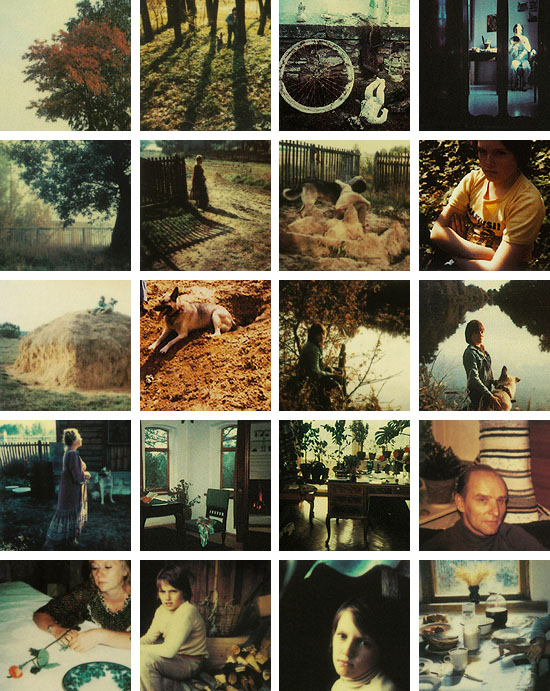

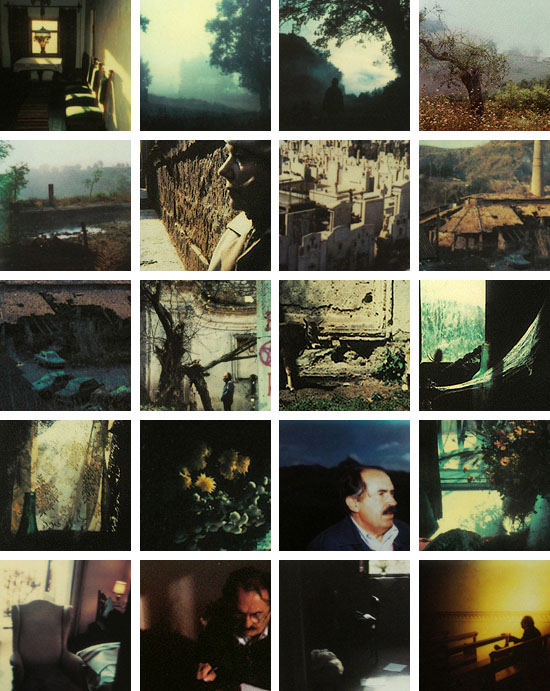




 As a contemporary art form, cinema has motivated deep philosophical investigations about its nature, function, and reception. This course focuses on philosophical concepts having to do with the nature of film and our experiences of it. We will discuss how a film conveys meaning by producing specific forms of experience in the audience. Using cinema as an inspiration and a source for questioning the meaning of life, other inquiries to be considered may include: What can film teach us about the nature of perception? How do we understand filmic time? What is true in a film? And simply, what is film?
As a contemporary art form, cinema has motivated deep philosophical investigations about its nature, function, and reception. This course focuses on philosophical concepts having to do with the nature of film and our experiences of it. We will discuss how a film conveys meaning by producing specific forms of experience in the audience. Using cinema as an inspiration and a source for questioning the meaning of life, other inquiries to be considered may include: What can film teach us about the nature of perception? How do we understand filmic time? What is true in a film? And simply, what is film? Course Topics:
Course Topics: